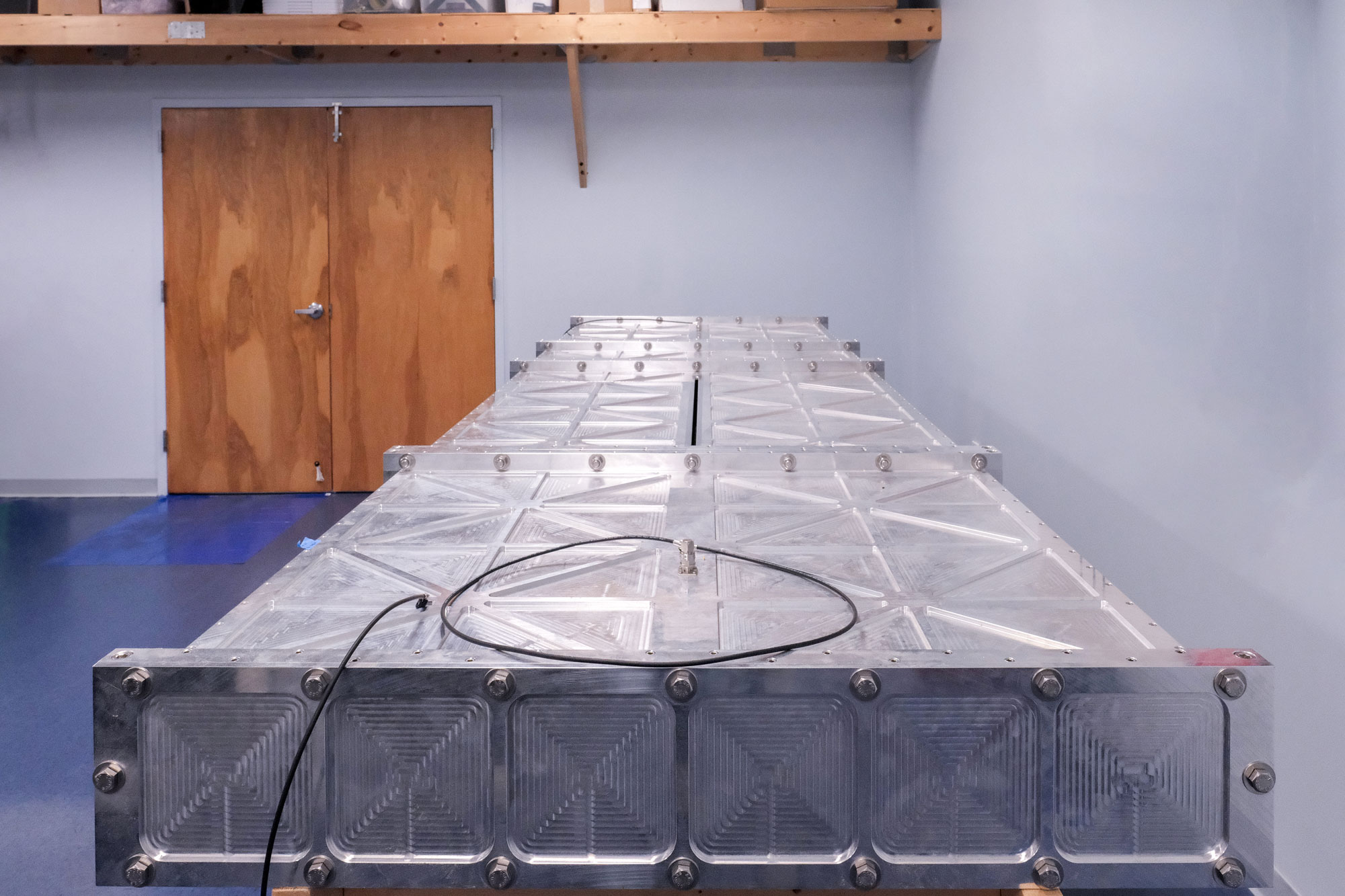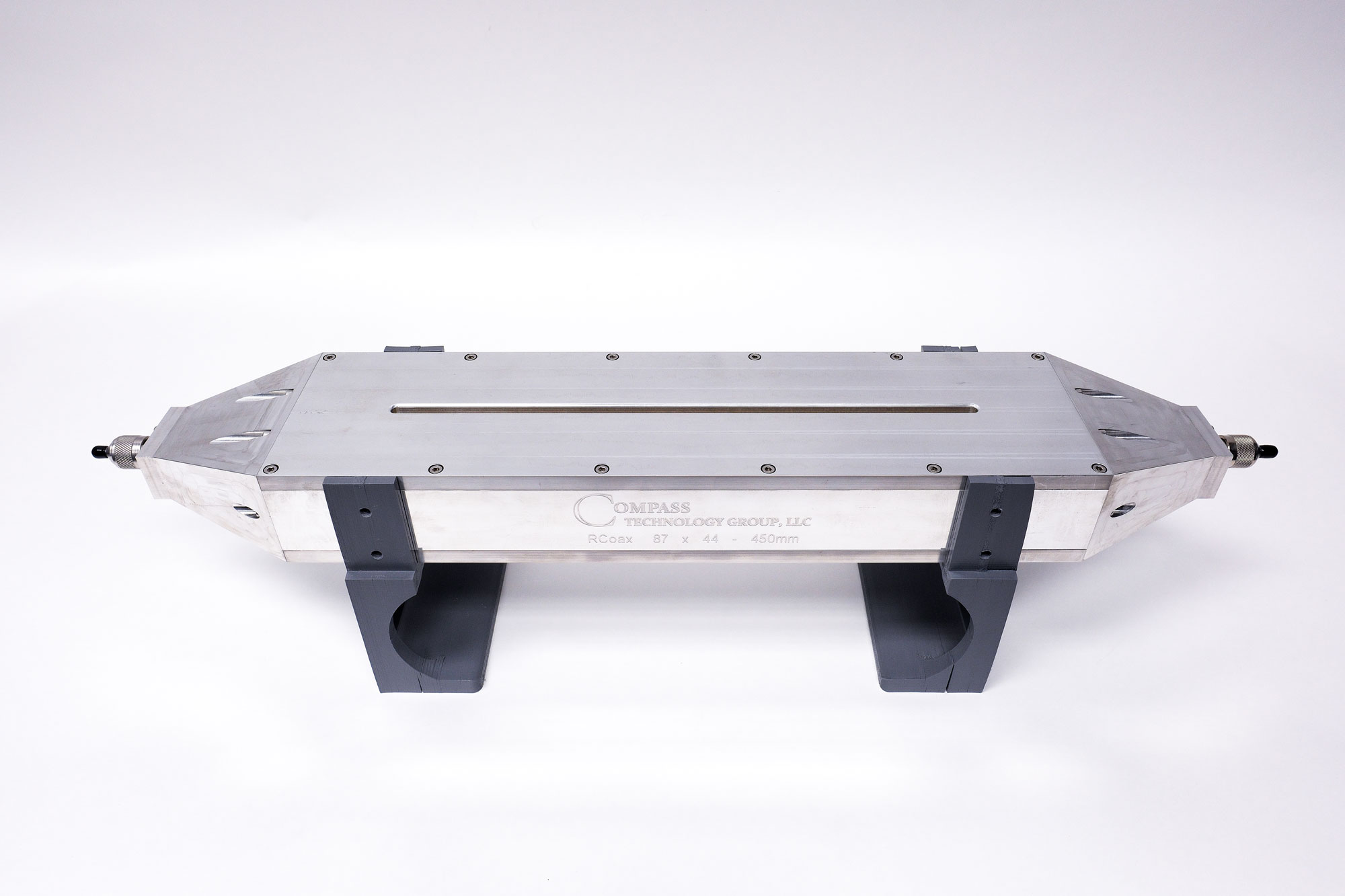The Transmission Line Method products developed and manufactured by Compass Technology Group determine intrinsic RF properties of materials by measuring the transmission and/or reflection of a material specimen placed within the fixture. In contrast to free-space methods, transmission lines guide waves though conductive structures that restrict the guided RF energy to a confined volume. This is particularly useful at UHF and VHF frequencies where the size of a specimen for free-space measurement may be impractically large due to the longer free-space wavelengths.

Low Frequency Rectangular Waveguide
The term waveguide refers to a hollow, rectangular transmission line that guides Radio Frequency (RF) energy to interact with material specimens. The transmission and reflection amplitude and phase are measured, which then determine the intrinsic dielectric and/or magnetic properties of a material specimen.

Slotted Rectangular Coaxial Line (R-Coax)
A unique product of Compass Technology Group, the R-Coax uses a slotted rectangular coaxial transmission line to enable non-destructive characterization of materials at broadband Radio Frequencies. The R-Coax utilizes CEM-inversion (computational electromagnetic), a technique pioneered by our team, to convert measured transmission amplitude and phase into either complex sheet impedance in ohms/square or into complex dielectric permittivity. Through a slot built into the transmission line, the R-Coax positions a material specimen so that it is parallel to the internal electric field within the fixture.

